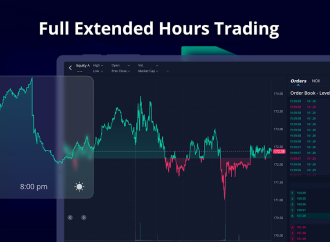The Bank of Japan (BOJ) has been known to implement unconventional policies, such as negative interest rates and yield curve control. But with the forthcoming appointment of its new governor, many are wondering if the BOJ can move beyond traditional bond yield caps. What strategies will be employed amidst the complexities and challenges ahead? In
The Bank of Japan (BOJ) has been known to implement unconventional policies, such as negative interest rates and yield curve control. But with the forthcoming appointment of its new governor, many are wondering if the BOJ can move beyond traditional bond yield caps. What strategies will be employed amidst the complexities and challenges ahead? In this blog post, we delve into these questions and explore what lies ahead for Japan’s central bank under its incoming leader.
What are the BOJ’s bond yield caps?
In September 2016, the Bank of Japan (BOJ) introduced a policy of capping yields on 10-year Japanese government bonds (JGBs) at around 0%. The policy was part of the BOJ’s efforts to stimulate the economy by increasing inflation and boosting economic growth.
The yield caps have been successful in keeping JGB yields low, but there are concerns that they may be having negative side effects. For one thing, the policy has made it difficult for the BOJ to adjust interest rates. If the BOJ wants to raise rates, it would need to do so by selling JGBs, which could push up yields and defeat the purpose of the policy. Also, some market participants believe that the yield caps are distorting the JGB market and making it less liquid.
There is also speculation that the incoming governor of the BOJ, Haruhiko Kuroda, may be considering scaling back or even eliminating the yield caps. This would be a complex undertaking, as it would require careful management of market expectations and could have unintended consequences.
Why is the BOJ moving beyond them?
The Bank of Japan (BOJ) has said it is considering moving away from its yield-curve control policy, under which it has been capping 10-year government bond yields at around zero percent. The potential change comes as the bank looks to ease the burden on its balance sheet, which has ballooned in size due to years of quantitative easing.
There are a number of reasons why the BOJ might be looking to move away from yield-curve control. One is that the policy has become increasingly difficult to maintain as the bank’s balance sheet has grown. The other is that, with interest rates already low, there is limited scope for further cuts that would boost economic activity.
A third reason is that some members of the BOJ’s policy board have expressed reservations about the effectiveness of yield-curve control in stimulating economic activity. Inflation has remained stubbornly low despite the BOJ’s aggressive monetary easing, and some argue that this shows that yield-curve control is not working as intended.
Fourth, there are concerns that capping government bond yields could have negative consequences for financial stability. If yields rise sharply in response to higher inflation or higher interest rates elsewhere in the world, this could put pressure on banks and other financial institutions that hold large amounts of government bonds.
Finally, there is a view within the BOJ that it should be gradually moving away from unconventional policies such as yield-curve control and towards more conventional
What are the complexities ahead for its incoming governor?
Incoming BOJ governor Haruhiko Kuroda faces a difficult task in trying to break the country out of its long-running deflationary funk. The central bank has already taken aggressive steps to stimulate the economy through its quantitative easing program, but this has not been enough to spark inflation. Some economists have suggested that the BOJ needs to take even more aggressive steps, such as setting a higher inflation target or increasing asset purchases. However, it is unclear if Kuroda will be able to push through these measures given the strong opposition from within the central bank.
There are also concerns that Kuroda may not be able to hold on to his position for long if he fails to deliver results. His predecessor, Masaaki Shirakawa, resigned earlier than expected after coming under fire for his handling of the economy. This highlights the pressure that Kuroda will be under to deliver results and raises doubts about his ability to do so.
How will this affect Japanese markets?
The Bank of Japan’s (BOJ) new governor, Haruhiko Kuroda, is widely expected to announce additional monetary stimulus measures at the bank’s next policy meeting on April 3-4. One key question is whether the BOJ will move beyond its current policy of capping 10-year Japanese government bond (JGB) yields at around 0%.
There are a few different ways that the BOJ could potentially expand its monetary stimulus measures. One option would be to increase the size of its asset purchase program. Another option would be to start buying longer-dated JGBs, which would put downward pressure on longer-term interest rates.
The decision on how to expand monetary stimulus measures will have important implications for Japanese markets. If the BOJ does not take aggressive action, it risks further exacerbating the already-severe deflationary pressures in the Japanese economy. On the other hand, if the BOJ takes too aggressive of an approach, it could cause a sharp sell-off in Japanese government bonds and send shockwaves through financial markets.
The market reaction to any potential expansion of monetary stimulus measures by the BOJ will be closely watched by investors around the world.
Conclusion
The incoming governor of the Bank of Japan will face a formidable challenge in navigating around the bond buying caps. To be successful, he must use innovative methods to create strategies that ensure financial stability while also enabling economic growth through monetary stimulus. With the right mix of fiscal and monetary policies, we believe that it is possible for the BOJ to move beyond its current yield limits and achieve positive outcomes both domestically and internationally.





















Leave a Comment
Your email address will not be published. Required fields are marked with *